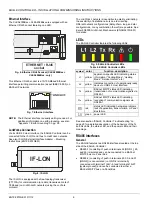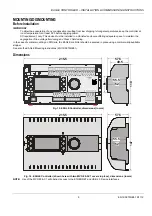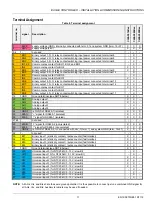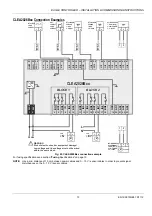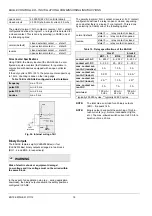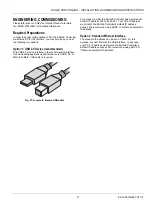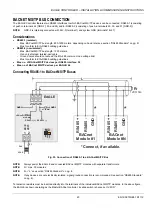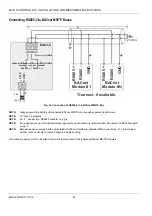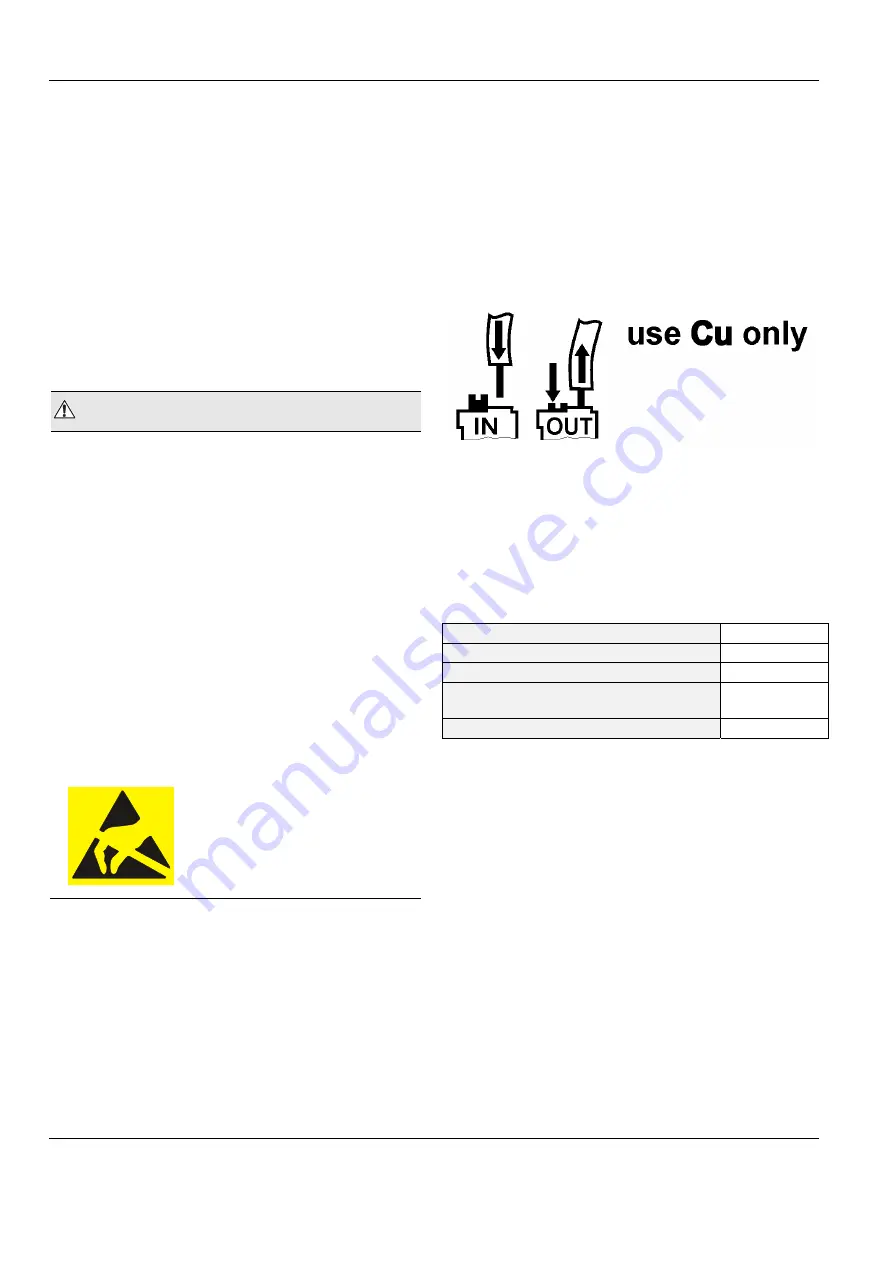
EAGLE CONTROLLER – INSTALLATION & COMMISSIONING INSTRUCTIONS
EN1Z-0970GE51 R1112
10
WIRING AND SET-UP
General Safety Considerations
When connecting the EAGLE, both VDE, National Electric
Code (NEC) or equivalent, and any local regulations must
be observed.
Electrical work should be carried out by a qualified
electrician.
Electrical connections must be made at terminal blocks.
For Europe only: To comply with CE requirements, devices
with a voltage in the range of 50 ... 1000 VAC or 75 ...
1500 VDC which are not provided with a supply cord and
plug or with other means for disconnection from the supply
having a contact separation of at least 3 mm in all poles
must have the means for disconnection incorporated in the
fixed wiring.
WARNING
Risk of electric shock or equipment damage!
►
Do not touch any live parts in the cabinet.
►
Disconnect the power supply before making connections to
or removing connections from terminals of the EAGLE
Controller and devices wired to it.
►
Do not use spare terminals as wiring support points.
►
Do not reconnect the power supply until you have
completed the installation.
►
Mixing of different voltages (e.g., 24 V and 230 V) within
individual relay blocks of the EAGLE is not allowed
►
To prevent a risk of injury due to electrical shock and/or
damage to the device due to short-circuiting, low-voltage
and high-voltage lines must be kept separate from one
another.
►
All terminals are protected (up to 24 Vac) against short-
circuiting and incorrect wiring (except when the 3-position
slide switch is set to “END,” in which case the terminals of
the RS485-1 bus [24, 25, and 26] have no such
protection). Higher voltages may damage the device.
►
Do not open the controller housing.
►
Observe precautions for handling electrostatic sensitive
devices.
NOTE:
All wiring must comply with applicable electrical
codes and ordinances. Refer to job or manu-
facturer’s drawings for details. Local wiring guide-
lines (e.g., IEC 364-6-61 or VDE 0100) may take
precedence over recommendations provided in
these instructions.
Fusing Specifications
System Fusing
We recommend that the user equip the system with an
external fuse.
Fusing of Active Field Devices
F2 (depends upon loads in use).
Wiring Terminals
The EAGLE is equipped with push-in terminal plugs.
Fig. 17. Inserting/removing wires from push-in terminals
NOTE:
In the case of solid conductors, the use of ferrules is
prohibited.
NOTE:
Use only one conductor per push-in terminal.
NOTE:
If two stranded wires are to be connected to a single
push-in terminal, twin wire end ferrules must be
used.
Table 7. EAGLE push-in terminal wiring specifications
plug gauge
0.2 … 1.50 mm
2
solid conductor H05(07) V-K
0.2 … 1.50 mm
2
stranded conductor H05(07) V-K
0.2 … 1.50 mm
2
stranded conductor with wire end
ferrules (w/o plastic collar)
0.2 … 1.50 mm
2
stripping length
10.0 +1.0 mm
Power Supply
Powering EAGLE
Power is supplied via a removable terminal plug (attached to
terminals 1 and 2). See also Fig. 19.
The power supply of the EAGLE Controller must conform to
Safety Class II.
NOTE:
To reduce overall current consumption, the EAGLE
can also be powered by a switch power supply
(rather than by a transformer). See also Table 2 on
pg. 3.






